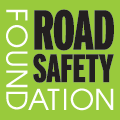NEW SCORING TO IDENTIFY CRASH LIKELIHOOD IN UK
The first full UK road inspections began in October and will continue until the end of the year. Using the newly-updated Road Protection Score, the inspections will provide star ratings for 7,000km of major inter-urban roads in England, Scotland, Wales and Northern Ireland. This is the first time that the new assessment is being used.
In addition to evaluating how road design protects road-users and why crashes are worse on some roads than others, the new scoring system assesses accident likelihood and identifies road elements that are known to increase crashes.
The data are being collected over relatively short sections of road. This means that problem stretches are identified and road authorities can use the information to make improvements.
 |
Bends undoubtedly have an influence on accident rate. Although number of bends is a factor, the presence of unexpectedly sharp bends is also important. |
 |
Blind crests and hidden dips can increase risk. |
 |
Edge-of-carriageway “shoulders” and strips – these allow scope for recovery, increase the distance to any obstacle and are combined with raised edge markings to warn drivers if they are deviating from the road. |
 |
Number of lanes and lane width are known to affect crash rates. |
 |
Central markings- Are there rumble strips? The presence of rumble strips reduces overtaking substantially. Is there central hatching? This is used extensively in Britain both to keep opposing flows further apart and to discourage overtaking. Are there overtaking restrictions? |
 |
Quality of signing and marking – Measure are being developed to assess the overall quality of parts of the route. |
 |
Junctions – As junction frequency along a route, so too does accident likelihood. Junction design is also a factor. |
 |
The amount of traffic increases the number of crashes, especially those involving vehicles meeting head-on.
The speed of traffic increases the likelihood of crashes in many circumstances and also the severity. |
The two-year project has been jointly funded by the Highways Agency and the AA Motoring Trust in the UK. The work, which ends next spring, is being managed by TRL with the road inspections being carried out by German motoring organisation ADAC, supported by Swedish consultants SWECO.
Meanwhile, SWECO was due to complete full-scale inspections of 1,500km of roads in Ireland by the end of October, examining in particular the safety of parallel routes between the same origins and destinations. The data will now be processed, with the results to be published by NRA (National Roads Authority) and AA Ireland in 2007.
Similar trials with the new scoring will be carried out in Germany and Sweden over the coming months.

